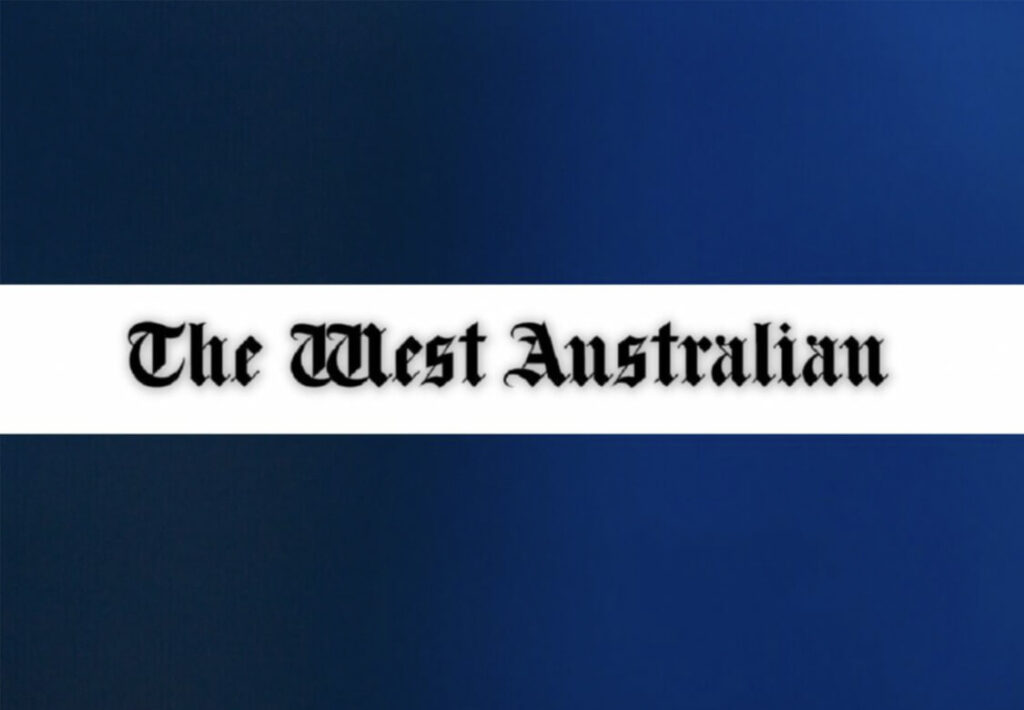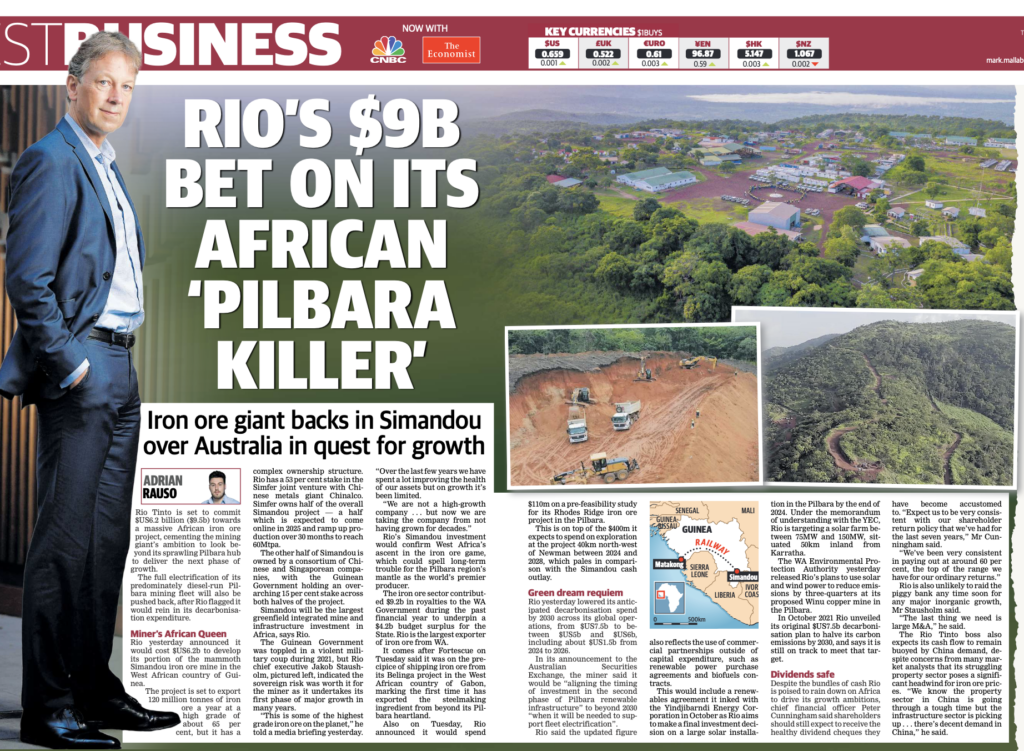

Rio Tinto is set to commit $US6.2 billion ($9.5b) towards a massive African iron ore project, cementing the mining giant’s ambition to look beyond its sprawling Pilbara hub to deliver the next phase of growth.
The full electrification of its predominately diesel-run Pilbara mining fleet will also be pushed back, after Rio flagged it would rein in its decarbonisation expenditure.
Miner’s African Queen
Rio yesterday announced it would cost $US6.2b to develop its portion of the mammoth Simandou iron ore mine in the West African country of Guinea.
The project is set to export 120 million tonnes of iron ore a year at a high grade of about 65 per cent, but it has a complex ownership structure. Rio has a 53 per cent stake in the Simfer joint venture with Chinese metals giant Chinalco. Simfer owns half of the overall Simandou project — a half which is expected to come online in 2025 and ramp up production over 30 months to reach 60Mtpa.
The other half of Simandou is owned by a consortium of Chinese and Singaporean companies, with the Guinean Government holding an overarching 15 per cent stake across both halves of the project.
Simandou will be the largest greenfield integrated mine and infrastructure investment in Africa, says Rio.
The Guinean Government was toppled in a violent military coup during 2021, but Rio chief executive Jakob Stausholm, pictured left, indicated the sovereign risk was worth it for the miner as it undertakes its first phase of major growth in many years.
“This is some of the highest grade iron ore on the planet,” he told a media briefing yesterday. “Over the last few years we have spent a lot improving the health of our assets but on growth it’s been limited.
“We are not a high-growth company … but now we are taking the company from not having grown for decades.”
Rio’s Simandou investment would confirm West Africa’s ascent in the iron ore game, which could spell long-term trouble for the Pilbara region’s mantle as the world’s premier producer.
The iron ore sector contributed $9.2b in royalties to the WA Government during the past financial year to underpin a $4.2b budget surplus for the State. Rio is the largest exporter of iron ore from WA.
It comes after Fortescue on Tuesday said it was on the precipice of shipping iron ore from its Belinga project in the West African country of Gabon, marking the first time it has exported the steelmaking ingredient from beyond its Pilbara heartland.
Also on Tuesday, Rio announced it would spend $110m on a pre-feasibility study for its Rhodes Ridge iron ore project in the Pilbara.
This is on top of the $400m it expects to spend on exploration at the project 40km north-west of Newman between 2024 and 2028, which pales in comparison with the Simandou cash outlay.
Green dream requiem
Rio yesterday lowered its anticipated decarbonisation spend by 2030 across its global operations, from $US7.5b to between $US5b and $US6b, including about $US1.5b from 2024 to 2026.
In its announcement to the Australian Securities Exchange, the miner said it would be “aligning the timing of investment in the second phase of Pilbara renewable infrastructure” to beyond 2030 “when it will be needed to support fleet electrification”.
Rio said the updated figure also reflects the use of commercial partnerships outside of capital expenditure, such as renewable power purchase agreements and biofuels contracts.
This would include a renewables agreement it inked with the Yindjibarndi Energy Corporation in October as Rio aims to make a final investment decision on a large solar installation in the Pilbara by the end of 2024. Under the memorandum of understanding with the YEC, Rio is targeting a solar farm between 75MW and 150MW, situated 50km inland from Karratha.
The WA Environmental Protection Authority yesterday released Rio’s plans to use solar and wind power to reduce emissions by three-quarters at its proposed Winu copper mine in the Pilbara.
In October 2021 Rio unveiled its original $US7.5b decarbonisation plan to halve its carbon emissions by 2030, and says it is still on track to meet that target.
Dividends safe
Despite the bundles of cash Rio is poised to rain down on Africa to drive its growth ambitions, chief financial officer Peter Cunningham said shareholders should still expect to receive the healthy dividend cheques they have become accustomed to.“Expect us to be very consistent with our shareholder return policy that we’ve had for the last seven years,” Mr Cunningham said.
“We’ve been very consistent in paying out at around 60 per cent, the top of the range we have for our ordinary returns.”
Rio is also unlikely to raid the piggy bank any time soon for any major inorganic growth, Mr Stausholm said.
“The last thing we need is large M&A,” he said.
The Rio Tinto boss also expects its cash flow to remain buoyed by China demand, despite concerns from many market analysts that its struggling property sector poses a significant headwind for iron ore prices. “We know the property sector in China is going through a tough time but the infrastructure sector is picking up … there’s decent demand in China,” he said.